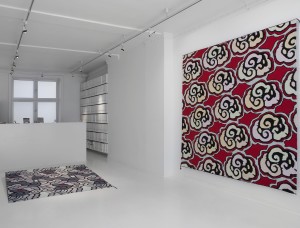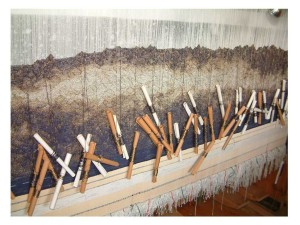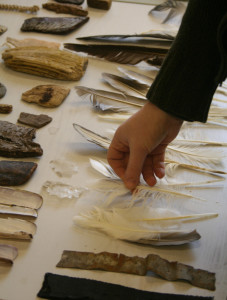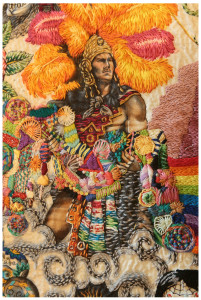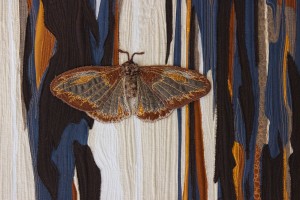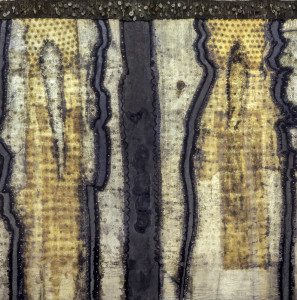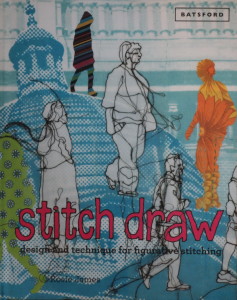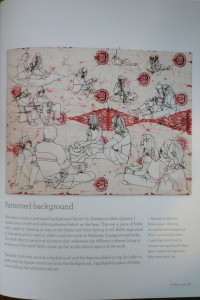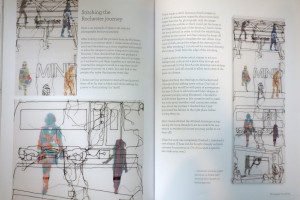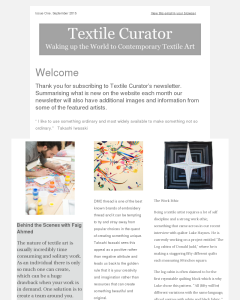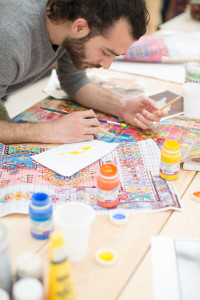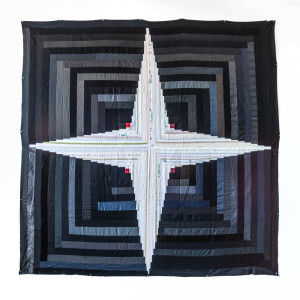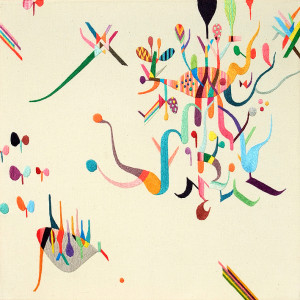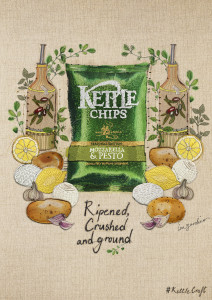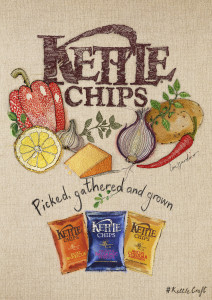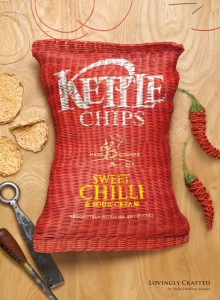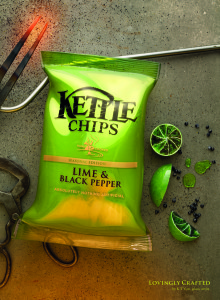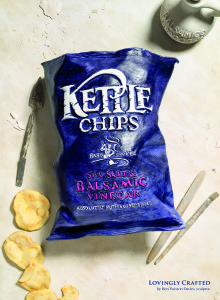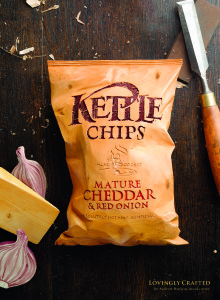Artists for the December exhibition
This month’s exhibition features textile artist Alice Fox and two well established tapestry artists, Norwegian, Brita Been and Hungarian, Ibolya Hegyi.
Brita Been’s work focuses on the bold use of colour and pattern where repetition makes her pieces simultaneously intricate yet simple. Her tapestries can also be used as rugs. Historically tapestries were used for both walls and floors and seeing them in the Soft Gallery in Oslo (above) shows that maybe it is time more artists made their work this versatile. As well as her main pieces, Brita also weaves delicate shawls in a variety of yarns including silk.
Ibolya’s Hegyi weaves using very dense warping allowing her to incorporate incredible detail into her work. Using universal themes such as space and weather forecasts, makes her pieces mood inspiring as well as technically interesting. The use of fibre optics also adds another dimension to her art.
Alice Fox has only been a professional artist since 2011 yet her recognisable style, talent and work ethic has already made her an established part of the textile scene. Her love of natures translates to organic tactile pieces where her light touch on natural materials enhances their beauty.



